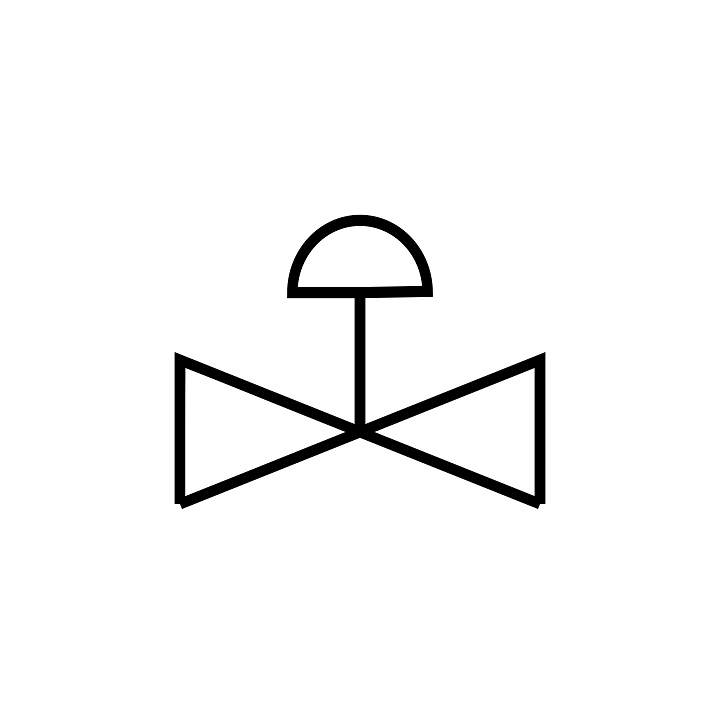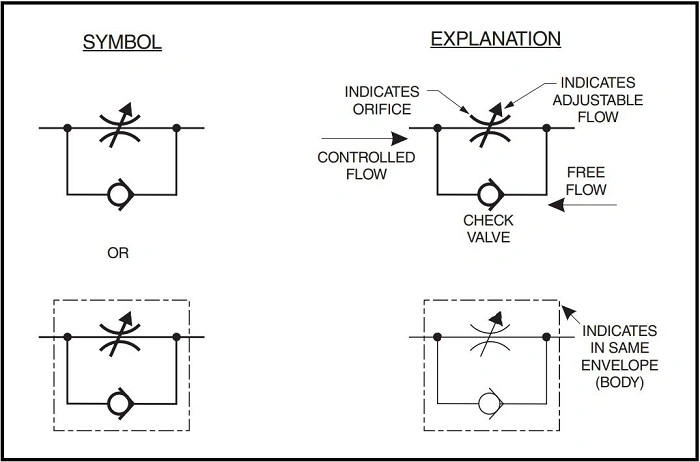Ever seen a weird shape on a pipe drawing? Looks like a bow tie? Or maybe a circle with lines? That’s the control valve symbol. It might look odd at first. But this tiny drawing runs a lot in real life.
Control valves manage flow. They pick how much liquid or gas goes through. They keep things safe. They fix pressure. They guard machines. One small symbol can run a whole factory system.
Let’s break it down. What’s a control valve? What’s the symbol look like? Why does every builder use it? You’ll learn it all in easy words.
What Is a Control Valve
A control valve is a thing that controls flow in a pipe. Think of it like a gate. It opens. It closes. Or stays partly open. This changes how fast stuff flows. It also manages pressure and heat.
You’ll find control valves in:
• Oil and gas plants
• Water plants
• Power plants
• Chemical shops
• Food places
• Heat and cool systems
Where fluids move, control valves work quiet in the back.
Why We Use Control Valve Symbols
Builders need a simple way to show valves on drawings. These drawings? Called P&ID. That’s Piping and… uh, the rest is long. Instead of writing big notes, they use symbols.
Control valve symbols show:
• Type of valve
• How it works
• What runs it
• If it’s electric or air-based
• Where it sits
One symbol tells a lot. Good drawings help folks get the system fast.
The Basic Control Valve Symbol
The basic symbol is simple:
A bow tie shape. Like two triangles touching tips.
It looks like this shape:
<
The left side? That’s where stuff comes in. The right side? Where it goes out.
The middle? That’s the control part.
Sometimes it’s in a circle. Sometimes just the bow tie. Either way means “this valve controls flow.”
How the Symbol Is Written on P&ID Drawings
The control valve symbol has three main parts:
The bow tie shape (the valve body)
A square or circle on top (the thing that moves it)
Letters in the circle (how it’s controlled)
Example:
A circle with the letters “LCV”.
L = Level
C = Controller
V = Valve
So “LCV” means: Level Control Valve. Simple!
Other ones:
• FCV = Flow control valve
• PCV = Pressure control valve
• TCV = Temperature control valve
These letters tell you what the valve controls.
Types of Control Valve Actuators (and Their Symbols)
A control valve can’t move by itself. Something must move it. That thing? Called the actuator. The symbol shows which one.
Here are the common types:
Pneumatic Actuator
Runs on air push.
Symbol: A circle with a slant line inside.
Electric Actuator
Runs on power.
Symbol: A circle with an “E” inside.
Hydraulic Actuator
Runs on oil push.
Symbol: A circle with a short up-down line.
Manual Wheel
You turn it by hand.
Symbol: A circle with a wheel sign.
These show how the valve opens and closes.
The Most Common Control Valve Types and Their Symbols
Control valves come in different shapes. Each has its own use. P&ID drawings show each type clearly.
Here are the main ones:
Globe Control Valve
Most common. Used for smooth control.
Symbol: Bow tie with normal lines.
Butterfly Control Valve
Used for big pipes. Opens fast.
Symbol: Bow tie in a circle.
Ball Control Valve
Good for on-off control.
Symbol: Bow tie with a circle in the middle.
Diaphragm Valve
Used for clean or bad fluids.
Symbol: Bow tie with a curved top.
Three-Way Control Valve
Splits flow two ways. Or mixes two flows.
Symbol: Bow tie with three lines.
Each one has its own job. The symbol tells you which.
Reading the Letters on a Control Valve Symbol
Letters on the valve tell you what it controls.
This comes from ISA rules. (That’s a group that makes standards.)
Common letters:
• F = Flow
• P = Pressure
• T = Temperature
• L = Level
• A = Alarm
• H = High
• L = Low
Example:
“FICV” means Flow Indicating Control Valve.
“PSV” means Pressure Safety Valve. (Not a control valve, but still a key.)
Once you learn these letters? You can read any drawing.
Control Valve Position Symbols
Valves can be shown in positions:
• Normally Open (NO)
• Normally Closed (NC)
This means how they stay when no power comes.
The symbol adds small marks to show this.
A line through the middle? It often means “closed.”
An open space? Means “open.”
This matters for safety. When a plant loses power, what happens? The symbol tells you.
Positioner and Controller Symbols
Many control valves need a positioner. It helps the valve move to the right spot.
Symbol: A small square near the actuator.
Controllers? Drawn as small circles with letters inside.
Example:
“FC” means Flow Controller.
It talks to the valve. Tells it how much to open.
Control Valve Tags and Labels
Every valve has a tag.
Like:
• CV-101
• FCV-202
• PCV-305
These help builders find the valve in real life. The tag from the drawing? Shows up on the real valve.
CV = Control Valve
Number = Its ID in the plant
How Control Valve Symbols Help in Real Life
These symbols do more than look nice on drawings. They help in:
• Planning a system
• Building a plant
• Running pipelines
• Finding problems
• Fixing stuff
• Keeping things safe
Think of a huge factory. Thousands of pipes. Hundreds of valves. No symbols? Total mess.
Symbols make things simple. Anyone from any place can get it.
Also Read: Symbol Style Name Ideas: Cool, Creative, and Fun Ways to Stand Out
Control Valves in Action
Here’s how a control valve works:
A sensor reads flow or pressure.
The controller checks it against the goal.
It sends a signal to the valve.
The valve opens or closes.
Flow changes. The system stays balanced.
This all happens on its own.
Control Valve Symbols in HVAC
In heating and cooling systems, the symbol shows:
• Where cold water flows
• How air mixes
• How steam is controlled
• How heat stays even
You’ll see control valves anywhere air or water moves.
Safety and Control Valve Symbols
Some valves protect systems from danger. When pressure gets too high? They let it flow out.
Symbols help builders spot:
• Which valves guard against high pressure
• Which ones stop flow in danger
• Which ones close on their own during fires
Safety needs the symbols to be clear.
Common Mistakes When Reading Symbols
New folks often:
• Mix up actuator types
• Skip letters in circles
• Miss where valves go
• Mix up on-off valves with control valves
Practice fixes it.
Why the Control Valve Symbol Matters
Control valves manage energy. They keep things smooth. They stop machines from breaking. They save money. They stop danger.
The symbol might look small. But it shows a key part of any system.
The control valve symbol may look simple. But it means a lot. It shows how a valve works. What it controls. How it runs.
From oil pipes to factory machines, this symbol guides builders and workers. It’s a world language that keeps systems safe, smooth, and steady.
Next time you see this symbol on a drawing? You’ll know what it means. And you’ll see how big a deal it really is.



